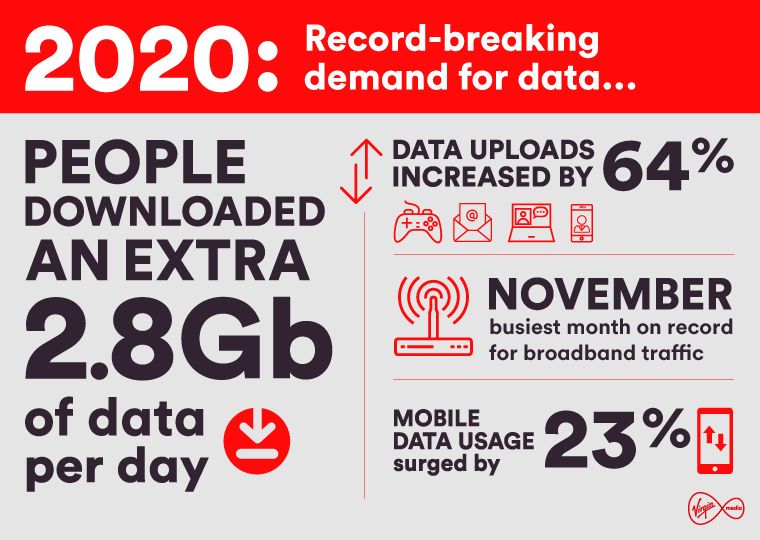Any links to online stores should be assumed to be affiliates. The company or PR agency provides all or most review samples. They have no control over my content, and I provide my honest opinion.
I have previously written a guide on comparing the Virgin Media Hub 5x vs 5 vs 4 vs 3 and this highlighted that the new Hub 5x uses fibre to premises XGS-PON in comparison to the DOCSIS 3.1 technology that’s predominantly used on the Virgin Media network.
Virgin are trialling the new Virgin XGS-PON technology, and this is planned to be fully rolled out, replacing DOCSIS 3.1 by 2028 at a cost of £100 per home.
Virgin’s recent upgrade to the XGS-PON network sets the stage for a potential boost in speeds up to 10Gbps. However, don’t anticipate these top speeds too soon; they’re currently testing out a more modest 2Gbps.
One of the most significant benefits of XGS-PON technology lies in its ability to support symmetrical data transmission rates. That means you could potentially enjoy gigabit speeds for both uploading and downloading. At present, my Virgin Gig1 service offers a gigabit download speed but restricts the upload speed to just 100Mbps.
Whether Virgin will take full advantage of this symmetry remains to be seen, but it’s reasonable to expect a substantial improvement in speed.
Comparison of XGS-PON vs DOCSIS 3.1
I have written a comparison of XGS-PON (10 Gigabit-capable Symmetric Passive Optical Network) and DOCSIS 3.1 (Data Over Cable Service Interface Specification). It is not specifically related to Virgin Media but the technology in general.
- Type of Network:
- XGS-PON: It’s a type of fiber optic access network technology, often used by telephone companies. It’s part of the larger GPON (Gigabit Passive Optical Networks) framework, and XGS-PON specifically supports 10 Gbps symmetrical data rates. In a PON, a single fiber-optic line can serve multiple endpoints through the use of splitters, which divide the signal among multiple customer endpoints.
- DOCSIS 3.1: It’s a standard for high-speed data transfer over existing cable TV (CATV) system. It’s used by cable operators to provide internet services. DOCSIS 3.1 can support speeds up to 10 Gbps downstream and 1 Gbps upstream.
- Performance and Speed:
- XGS-PON: It provides symmetrical speeds, meaning you’ll get the same speeds for both download and upload, up to 10 Gbps. This can be especially valuable for applications that need substantial upstream bandwidth, like video conferencing, uploading videos, and cloud storage.
- DOCSIS 3.1: It supports speeds up to 10 Gbps downstream and 1 Gbps upstream, which is asymmetric. This can work well for many typical home users, as most of their internet usage involves downloading rather than uploading.
- Infrastructure:
- XGS-PON: It requires fibre-optic cabling all the way to the home or building (FTTH/FTTB). Deploying fibre networks can be expensive and time-consuming due to the need for new infrastructure, especially in regions where fibre isn’t already in place.
- DOCSIS 3.1: It uses the existing coaxial cable infrastructure, which is already in place in many homes and buildings for cable TV. This can make it quicker and less expensive to deploy in many cases.
- Reliability and Latency:
- XGS-PON: Fiber networks are generally considered more reliable, as they’re less susceptible to interference and signal degradation. They can also provide lower latency, which is beneficial for applications like online gaming and video conferencing.
- DOCSIS 3.1: Although improvements have been made with DOCSIS 3.1, cable networks may still suffer from more latency and interference issues than fibre networks. Factors like network congestion can also potentially impact performance.
- Future-Proofing:
- XGS-PON: Fiber-optic networks are highly future-proof. By simply changing equipment on both ends, the same fibre lines can potentially support even higher speeds in the future.
- DOCSIS 3.1: While DOCSIS 3.1 can support considerable speeds, future speed enhancements may require new standards (e.g., DOCSIS 4.0) and potentially significant hardware upgrades.
Conclusion

It is good to see that Virgin Media are upgrading to XGS-PON. The UK has been lagging behind many countries with our Internet speeds, and we now seem to be gaining momentum for true ultra-fast Internet speeds.
The XGS-PON network will pave the way for multi-gig connections, but more importantly, it should allow Virgin Media to significantly upgrade the upload speeds.
Most people don’t need a symmetrical Internet connection, but the current 10:1 ratio is ridiculous. With modern Internet usage changing so quickly, upload speeds have become increasingly important. Many people now work from home, and it is increasingly important to be able to have a good upload speed. We may not upload as much as we download, but it is becoming increasingly important for things like video calls, hosting your services, or uploading work to company servers.
Back in 2020, Virgin Media published stats saying that data uploads had increased by 64% which I think is a good indication that we need much faster uploads.
I am James, a UK-based tech enthusiast and the Editor and Owner of Mighty Gadget, which I’ve proudly run since 2007. Passionate about all things technology, my expertise spans from computers and networking to mobile, wearables, and smart home devices.
As a fitness fanatic who loves running and cycling, I also have a keen interest in fitness-related technology, and I take every opportunity to cover this niche on my blog. My diverse interests allow me to bring a unique perspective to tech blogging, merging lifestyle, fitness, and the latest tech trends.
In my academic pursuits, I earned a BSc in Information Systems Design from UCLAN, before advancing my learning with a Master’s Degree in Computing. This advanced study also included Cisco CCNA accreditation, further demonstrating my commitment to understanding and staying ahead of the technology curve.
I’m proud to share that Vuelio has consistently ranked Mighty Gadget as one of the top technology blogs in the UK. With my dedication to technology and drive to share my insights, I aim to continue providing my readers with engaging and informative content.







